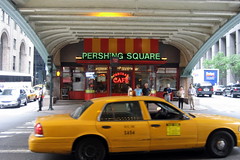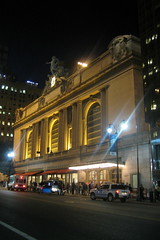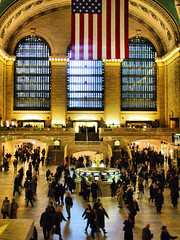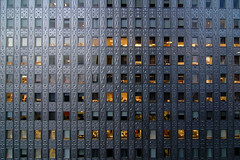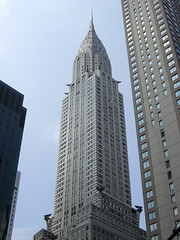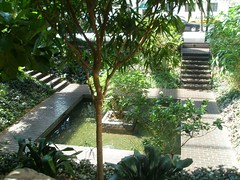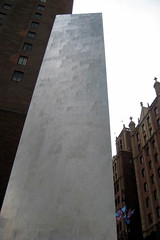South:

Corner (640 8th Ave): Known as
11 Times Square
or Times Square Plaza, this glassy 35-story office building
was designed by Fox & Fowle and built from 2007-10. It's
supposed to get a seven-story aquarium as an anchor
tenant.
258: The address of Apollo Oriental
Restaurant, described in a
1940 restaurant
guide as "specializ[ing] in real Greek dishes."
250: Site of a Horn & Hardart Automat.
AMC Empire 25
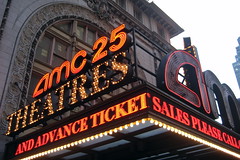
236: The facade of this cinema was built
in 1912 as the Eltinge Theatre, named for a popular
female impersonator of the day; Abbott and Costello
debuted here as part of the Eltinge Follies in
1935. It was later a movie house known as Laff Movie
and since 1954 The Empire. In March 1998, the theater
was moved 168 feet to the west to facilitate the
construction of the Madame Tussaud complex.
Hilton Times Square
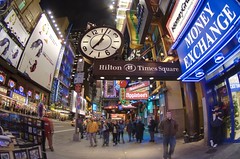
234: The
Liberty Theatre was built here
in 1904; George M. Cohan debuted the songs "Give My Regards to Broadway" and
"Yankee Doodle Dandy" here that year, and in 1915, the racist
 cinema milestone Birth of a Nation had its New York
premiere.
Now it serves as the base of the
Hilton Times Square, whose 21st-floor lobby features the
Pinnacle Bar. (Note
Tom Otterness' cartoon-like
sculpture Time + Money on the Hilton's entrance.)
cinema milestone Birth of a Nation had its New York
premiere.
Now it serves as the base of the
Hilton Times Square, whose 21st-floor lobby features the
Pinnacle Bar. (Note
Tom Otterness' cartoon-like
sculpture Time + Money on the Hilton's entrance.)
At the same address is
Ripley's Times Square
Odditorium, which opened
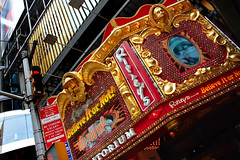 in 2007 boasting the world's
largest collection of shrunken heads, as well as Babe Ruth's
Yankees uniform and a piece of the Berlin Wall.
in 2007 boasting the world's
largest collection of shrunken heads, as well as Babe Ruth's
Yankees uniform and a piece of the Berlin Wall.
Also at this address is Universal News, a 24-hour newsstand
with a strong domestic and foreign paper
selection.
228: This was the address of
Murray's Roman
Gardens, a lobster palace whose decor
prominently featured naked nymphs and goddesses.
After Prohibition, it was replaced by Hubert's
Museum, a famed freakshow that was home to
Heckler's Trained Flea Circus. Celebrated by
artists ranging from Joe Mitchell to Diane Arbus
to Lenny Bruce, it eventually became PeepLand
before being subsumed by the wax museum next door.
This was also the address of the Marine Bar and Grill,
a 1930s gay bar that catered to sailors looking
for rough trade.
Madame Tussaud's Wax Museum
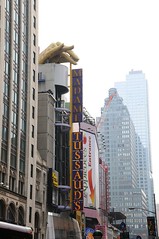
226: The facade dates to 1914, when it was
built as the Candler Theater, associated with the
Candler Building next door; leased to Sam Harris and
George Cohan, it soon became the Cohan and Harris Theatre
and by 1921 was known as
The Harris. John Barrymore
set a record here by playing Hamlet 101 nights in a row.
From 1933 to 1989 it was a movie house; in 1997 the theater
was demolished and the wax museum constructed behind the
Harris' facade.
220: The Candler Building was built in 1914
to house the offices of Asa Candler, owner of Coca-Cola.
218: The Disney Store—ground zero of
Disneyfication. Formerly Peep Land.
New Amsterdam Theater
214: This Art Nouveau masterpiece opened
in 1903, the same night as the Lyceum, making them the
two oldest Broadway theaters still operating.
This one housed the
Zeigfield Follies from 1913
until 1927, featuring such stars as
Fanny Brice,
W.C. Fields, Will Rogers, Fred Astaire and
Eddie Cantor. Composers
like Irving Berlin, Jerome Kern and Victor Herbert
wrote for the Follies. The roof featured another
theater, known as the Midnight Frolic. It was turned
into a movie palace in 1937.
By 1993, when Disney took it over, it was so
decrepit that renovation cost $34 million
(mostly paid for by the city). Opened in
1997; The Lion King, which premiered here later that year,
has been going strong ever since.
210: The address of Chase's Cafeteria,
a ''hoodlum'' hangout that appears in On
the Road as ''Ritzy's Bar.'' Alfred Kinsey
researched human sexuality here in 1945.

Corner (5 Times Square): Offices of financial firm
Ernst & Young; the sporting goods store Champs
is on the ground floor.
Giuliani Partners, the former
mayor's security consulting firm, is located here—
though considering how unprepared the city was for
September 11, it's a wonder anyone pays any attention
to anything he has to say on the subject.
The kiosk on the corner is one of the
first newsstands to get the New York Times—
sometimes before 4 a.m.
| 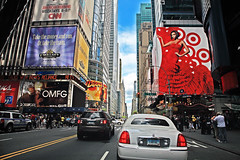
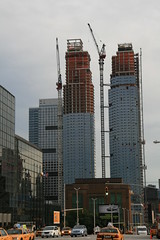
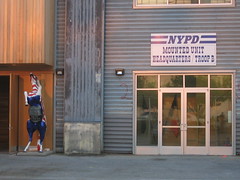




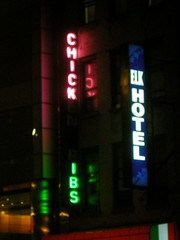
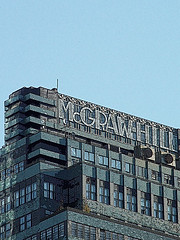

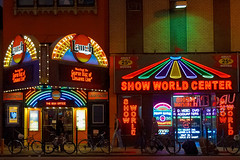







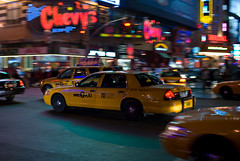


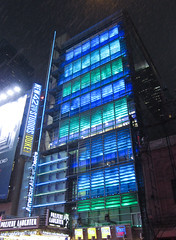

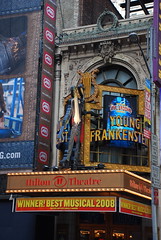
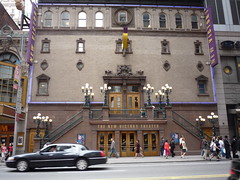





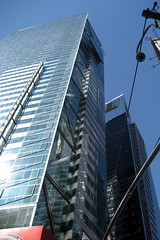
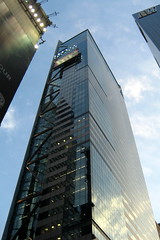
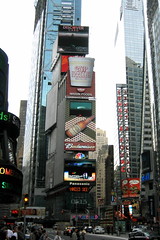





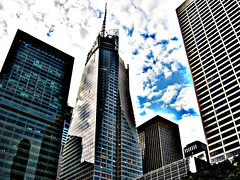
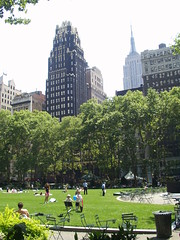
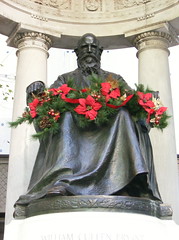

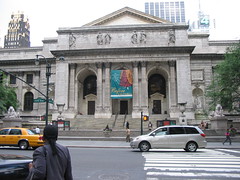
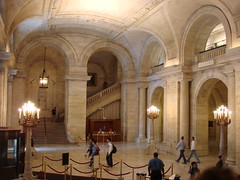
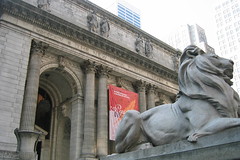

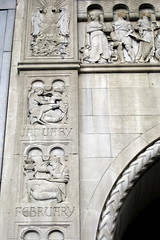
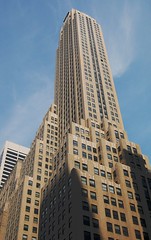

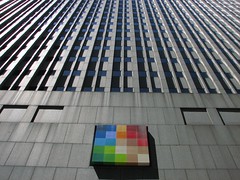 96: On the show Agent Carter, the sinister
oil company Roxxon is located at this fictional address.
/>
96: On the show Agent Carter, the sinister
oil company Roxxon is located at this fictional address.
/>